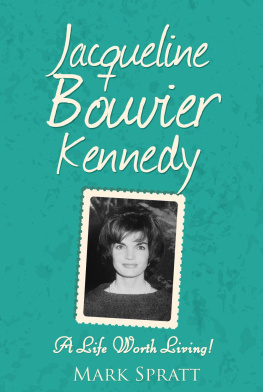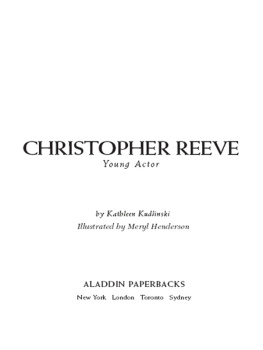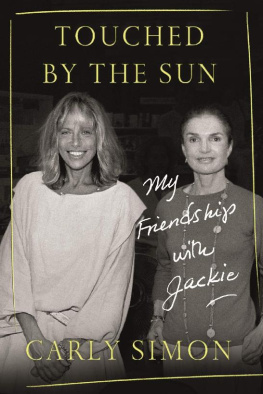JACQUELINE KENNEDY ONASSIS
Friend of the Arts
illustrated by Meryl Henderson
Jacqueline Kennedy Onassis
Friend of the Arts
Beatrice Gormley
ALADDIN PAPERBACKS
NewYork London Toronto Sydney Singapore

If you purchased this book without a cover, you should be aware that this book is stolen property. It was reported as unsold and destroyed to the publisher, and neither the author nor the publisher has received any payment for this stripped book.
First Aladdin Paperbacks edition September 2002
Text copyright 2002 by Beatrice Gormley
Illustrations copyright 2002 by Meryl Henderson
ALADDIN PAPERBACKS
An imprint of Simon & Schuster Childrens Publishing Division
1230 Avenue of the Americas
New York, NY 10020
www.SimonandSchuster.com
All rights reserved, including the right of reproduction in whole or in part in any form.
ALADDIN PAPERBACKS, CHILDHOOD OF FAMOUS AMERICANS, and colophon are trademarks of Simon & Schuster, Inc.
Designed by Lisa Vega
The text of this book was set in Adobe Garamond
Manufactured in the United States of America
2 4 6 8 10 9 7 5 3
Library of Congress Control Number: 2002107827
ISBN-13: 978-0-689-85295-4
ISBN-13: 978-1-4391-1358-5
ISBN-10: 0-689-85295-9
JACQUELINE KENNEDY ONASSIS
Friend of the Arts
CONTENTS
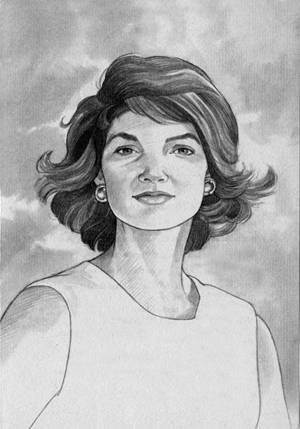
ILLUSTRATIONS
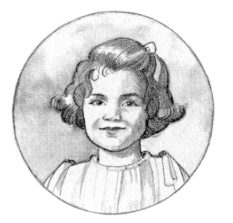
An Aristocratic Family
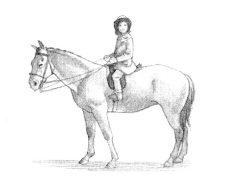
It was a bright autumn day in 1933. The sky over Central Park in New York City was clear blue, and the trees glowed with orange and yellow leaves.
Along a path in the park skipped a girl about four years old. Her thick, curly dark hair was tied back on one side with a ribbon, and she wore a light coat over her dress. Behind the girl, a nanny pushed a baby carriage. Its wheels crunched over dry leaves.
Dont get too far ahead of me, Jackie, warned the nanny.
I wont, Miss Newey, said Jackie. She turned and skipped back. In the baby carriage her little sister, Lee, blinked at the world from under her pink bonnet. Jackie waved at Lee and skipped around the carriage. If she skipped behind Miss Newey, Jackie reasoned, she couldnt get ahead of her.
Miss Newey walked so slowly! Sometimes she even stopped to chat with other nannies. Jackie skipped backward, then forward again, then slowed to a walk. She noticed some fallen leaves on the grass, like orange and yellow stars.
And what was that gleaming under a different kind of leaf? A shiny brown horse chestnut. And another, and another Jackie wandered across the grass, stooping to pick up the beautiful chestnuts and store them in her coat pockets.
As she came over a rise Jackie heard a baby crying. Down in a hollow, half-hidden by bushes, was a tarpaper shack. Jackie hesitated. Miss Newey had told her not to go near these shacks. You are a very fortunate little girl, the nanny had added. Think of the poor children who have to live like that.
As Jackie watched, a woman in a rumpled, dingy dress ducked out of the shack. She held a bundle of ragsno, it was a baby. That was where the crying came from.
The woman started to look up, and Jackie suddenly felt that she shouldnt be staring. Turning, she ran across the lawn. She should get back to Miss Newey and Baby Lee.
But now the path where the nanny and baby carriage had been was empty. Ahead, the path forked. One way climbed up a hill, and the other curved around behind evergreen shrubs.
Miss Newey must have gone over the hill, Jackie decided. Jackie would catch up with her quickly, so that the nanny wouldnt worry.
Briskly Jackie strode over the hill, under more trees, alongside a pond. The water shone brilliant blue. On a bench by the pond, a man in a shabby dark suit was stretched out, asleep. Miss Newey didnt want Jackie to go near those men who slept in the park either.
Then Jackie spotted a solid form in sensible coat and shoesa nanny pushing a baby carriage. The back of the woman was disappearing through an arch. Jackie breathed a sigh of relief. Miss Newey! she yelled to the figure and broke into a run.
But as the nanny glanced over her shoulder, Jackie saw that she wasnt Miss Newey. Jackie stopped short, swallowing hard. Where was Miss Newey?
The strange nanny looked back at her again. She must be wondering what a little girl was doing in the park all by herself. Putting her chin in the air, Jackie turned off on a side path. She would not show that she was worried.
When Mummy coached Jackie about riding her pony, she said the most important thing was to act as if you knew what you were doing. Then the horse would obey you. Now it seemed to Jackie that trying to find Miss Newey was like riding a horse. If Jackie acted as if she knew what she was doing
There! Now Jackie did know what she was doing. Up ahead, near a lamppost, stood a man in a blue uniforma policeman. Policemen were in the park to help people.
The policeman was already smiling at Jackie as she walked toward him. She spoke up clearly: My nanny and my sister seem to be lost.
Do they? He stooped down to talk to her. Well, dont worrywell find them. Whats your name? Do you know your addresswhere you live?
My name is Jacqueline Bouvier, said Jackie. I live in the apartment house where Ernest is the elevator man.
The policeman had Jackie repeat her name twice, Jahk-leen Boo-vee-ay. But he still didnt seem to understand. Didnt everyone in New York know the Bouviers?
Tell you whatlets go along to the station, said the policeman, taking her hand. Thats where lost nannies usually end up.
As they walked out of the park, chatting, Jackie mentioned that she knew her telephone number. Rhinelander 4-6167, she said. You could call Mummy and tell her about Miss Newey and Baby Lee getting lost.
The policemans lips twitched, but he said only, Yes, I could. I think I will.
When they reached the police station, the officer sat Jackie up on a high stool. He picked up the telephone and told the operator the Bouviers number. Jackie listened to his side of the conversation. Maam, we have a little girl here. Im not sure of her name, but she gave us this telephone number.
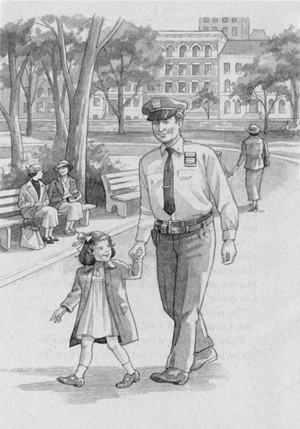
Then the officer held the receiver to Jackies ear. Mummys voice, strangely high and strained, said, Jacqueline? Darling, Mummy is taking a taxi to the police station. Wait right there!
That was a silly thing to saywhy would Jackie go somewhere else? She was having a fine time at the police station. The officers gathered around her stool, telling her what a brave, pretty little girl she was. Whered you get those dimples? One of them gave her a piece of peppermint candy.
All too soon, a woman with hastily combed hair, wearing a fur-collared coat thrown around her shoulders, rushed into the station. I am Mrs. John V. Bouvier III, and my daughter She stopped short, catching sight of Jackie on her stool.
Next page

